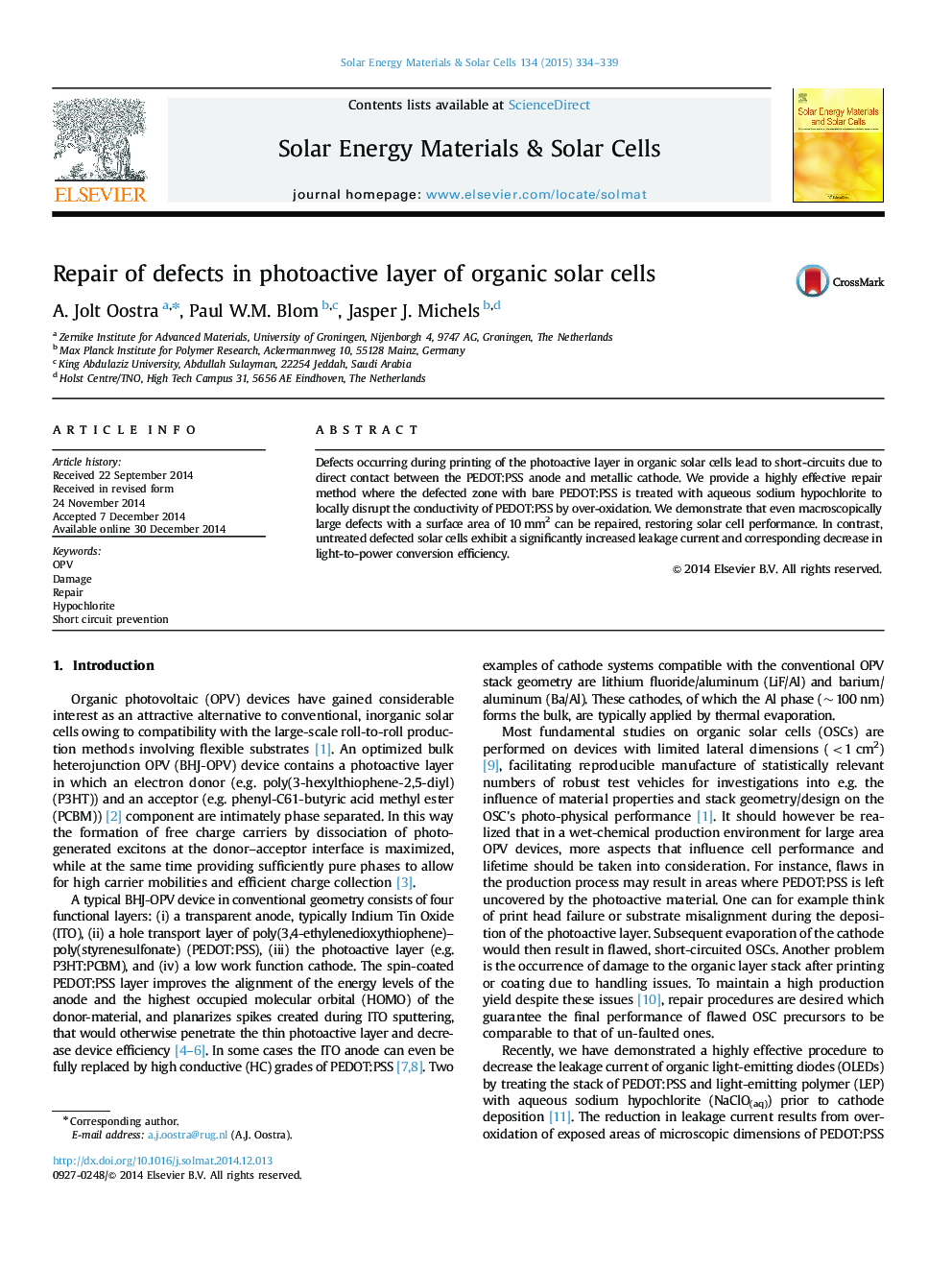| Article ID | Journal | Published Year | Pages | File Type |
|---|---|---|---|---|
| 77925 | Solar Energy Materials and Solar Cells | 2015 | 6 Pages |
•We present a highly effective method to repair large-scale defects in organic solar cells.•Macroscopic defects covering 2.5% of the active region can be repaired.•The method is suitable for conventional cells with a Ba/Al or LiF/Al cathode.•The method is deemed compatible with large scale processing methods.
Defects occurring during printing of the photoactive layer in organic solar cells lead to short-circuits due to direct contact between the PEDOT:PSS anode and metallic cathode. We provide a highly effective repair method where the defected zone with bare PEDOT:PSS is treated with aqueous sodium hypochlorite to locally disrupt the conductivity of PEDOT:PSS by over-oxidation. We demonstrate that even macroscopically large defects with a surface area of 10 mm2 can be repaired, restoring solar cell performance. In contrast, untreated defected solar cells exhibit a significantly increased leakage current and corresponding decrease in light-to-power conversion efficiency.
Graphical abstractFigure optionsDownload full-size imageDownload as PowerPoint slide
